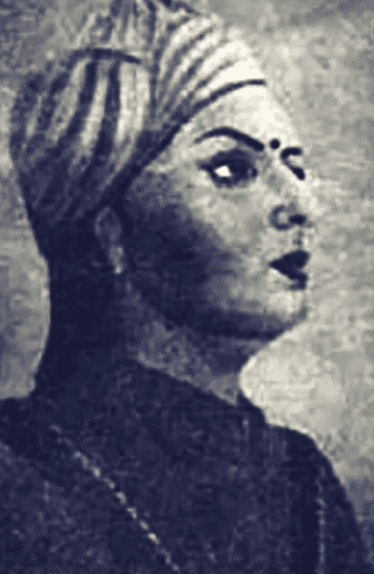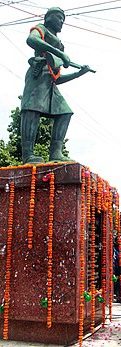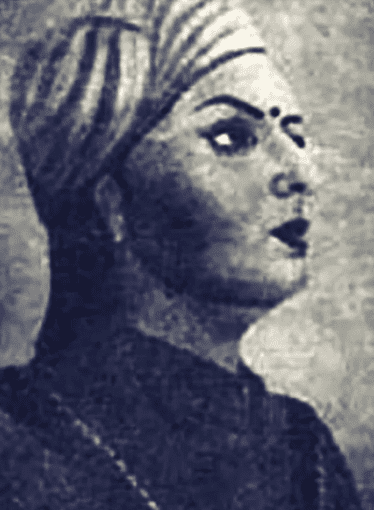The revolt of 1857 was the first major armed insurrection launched by the Indians against the British Raj. It was the time when the draconian policies along with the oppressive laws of the British government were exploiting the lives of Indians.
We all are aware of the causes which led to the outbreak of the war in 1857 but we haven’t appreciated the sacrifice that our people had made to free this country from foreign rule.

This article will cover the hidden story of a young lady who alone killed 32 British soldiers and made the highest sacrifice for the nation. Her name is Uda Devi (from Dalit Community), a sniper who led a women contingent against the British in the battle of Sikandar Bagh.
The mutiny was spread in almost the whole of northern India and several leaders took up arms and gave a gallant fight to the British Raj.
Content
Background
This great mutiny took place during the period of Lord Canning. It is also true that the then British regime took this insurrection like an ordinary mutiny of the soldiers but for Indians and especially for men like V.D.Savarkar this was the first war of Independence.
The immediate cause for this war was the introduction of Enfield Rifles. These new rifles had to be greased with the animal fat of Cow and Pigs. This move of the EIC (East Indian Company) completely backfired and it further enraged the Indians. However, the revolt of 1857 itself is an ocean of unending stories of Patriotism. But here we will cover the story of Uda Devi or Uda Devi Pasi.
Uda Devi and Her Rise
Uda Devi is believed to be from Awadh (Oudh), situated in modern-day Uttar Pradesh. Later she decided to approach Begum Hazrat Mahal for military training.
Inspired by the skills and determination towards her country Hazrat Mahal gave Uda Devi the command to form a women’s battalion.

Note: The valor of Begum Hazrat Mahal had to be appreciated as she declared war against the British Raj and fought for the independence of the country.
Dauntless Uda Devi emerged as a fierce sniper and due to this Begum facilitated her military training. Later she married Makka Pasi who was a soldier in the Begum’s army. Together these two became an integral part of their army.
10 May 1857 was the day when the British saw the real mutiny of the soldiers. In Meerut, the Indian sepoys killed 50 British troops.
Note: The Sepoys laid a siege on Kanpur
On 2 July 1857, Begum Hazrat Mahal declared her 11 years old son as the king of Lucknow, and Begum herself took the administration of the kingdom. During the revolt at Kanpur, the sepoys captured 120 British men, women, and children and killed them. This incident is known as the Bibighar Massacre.
This incident from the mutineers boiled the British administration to its core and they decided to finish the mutineers once and for all.
Battle of Sikandar Bagh
The British marched towards Kanpur to take revenge on the mutineers. The engagement between the British and the mutineers took place in November at the British Residency in Lucknow.
Sikandar Bagh was a villa that was spread across 4.5 acres in Lucknow. This villa had a well-protected fortified wall and generally, it was a fortified Mahal of Wajid Ali Shah the husband of Begum Hazrat Mahal.
The fight between the British and the sepoys was tremendous. It is believed that there were around 2,000 sepoys including Makka Pasi, Uda Devi, and the women regiment.
The British forces were under the command of Colin Campbell and had a superior force as compared to their enemy. The cannons and artillery of the British played an important role in changing the course of the battle.
The fortified walls of Sikandar Bagh fell in front of the heavy shelling of the British artillery. Soon after this the British ruthlessly charge into the villa and decided to kill every single sepoy.
However, the Indians fought bravely and both sides suffered heavy losses. In this vehement encounter Makka Pasi, the husband of Uda Devi attained martyrdom.
Uda Devi watched the sacrifice of her husband and several others. She decided to do the same. She ordered her troops to attack from different sides probably on the flanks of the British army.
When her troops engage with the British Uda Devi climbed a banyan or peepal tree to shoot the officers of the British forces.
Fierce Sniper and Martyrdom
Uda Devi took cover in that tree and shot continuously on the British troops. There was no shortage of ammunition as Uda Devi carried a full pouch of it.
The British officials were shocked by the number of causalities of the troops. Captain Dawson was surprised by this incident it was just like what the German may have witnessed during the second world war when a Russian sniper known as Vasily Zaitsev killed many German soldiers during the battle of Stalingrad.
Uda Devi relentlessly shot down the British soldiers and with time the dead bodies of the latter kept increasing.
Later Captain Dawson order his officer Quaker Wallace to look for the hidden mutineers as there were no soldiers left.
When Quaker Wallace reached towards the tree he realized that there is a sniper on the nearby tree probably a male as Uda Devi was wearing male attire.
It is believed that after this Wallace shot down Uda Devi. When the body of this brave freedom fighter fell on the ground the British were amazed to see that it was a female who was fighting against them for her country.
Even Captain Dawson and Campbell paid respect to this lady who generated widespread fear among their troops which were armed with advanced guns and artillery.
Another British officer who paid respect to this freedom fighter was William Forbes Mitchell who in his book Reminiscences of the Great Mutiny had written
“In the court of the Secundrabagh, there was a large peepul tree. When the battle was almost over our troops went under the tree for its shade. But suddenly someone from somewhere fired upon our troops and several soldiers lay dead around that tree. When Captain Dawson called Quaker Wallace to look for the hidden enemy the latter found that there is a hidden sepoy in the tree. Wallace immediately called out I see him sir and shot Uda Devi immediately. The lady was wearing a tight male attire with a red jacket and she was armed with old pattern cavalry pistols.”
….. Taken from Saffron Swords
In the battle of Sikandar Bagh all 2,000 Indians soldiers sacrifice their lives while the British lost 180 troops. The Pasi community in the Pilibhit (in modern-day Uttar Pradesh) region commemorates 16th November as the Martyrdom day of Uda Devi.
But the story of Uda Devi a Veerangini i.e (female warriors) hasn’t been told and it is up to us to tell the young generation about the real protectors of our country.
LIKE WHAT WE ARE DOING? DONATE TO DHARMAYUDH !
If you support what we are doing and would like to contribute to help us grow and reach more Indians to teach them more about such forgotten historic Indian Heroes and stories, please consider donating any amount. It will help us grow.

